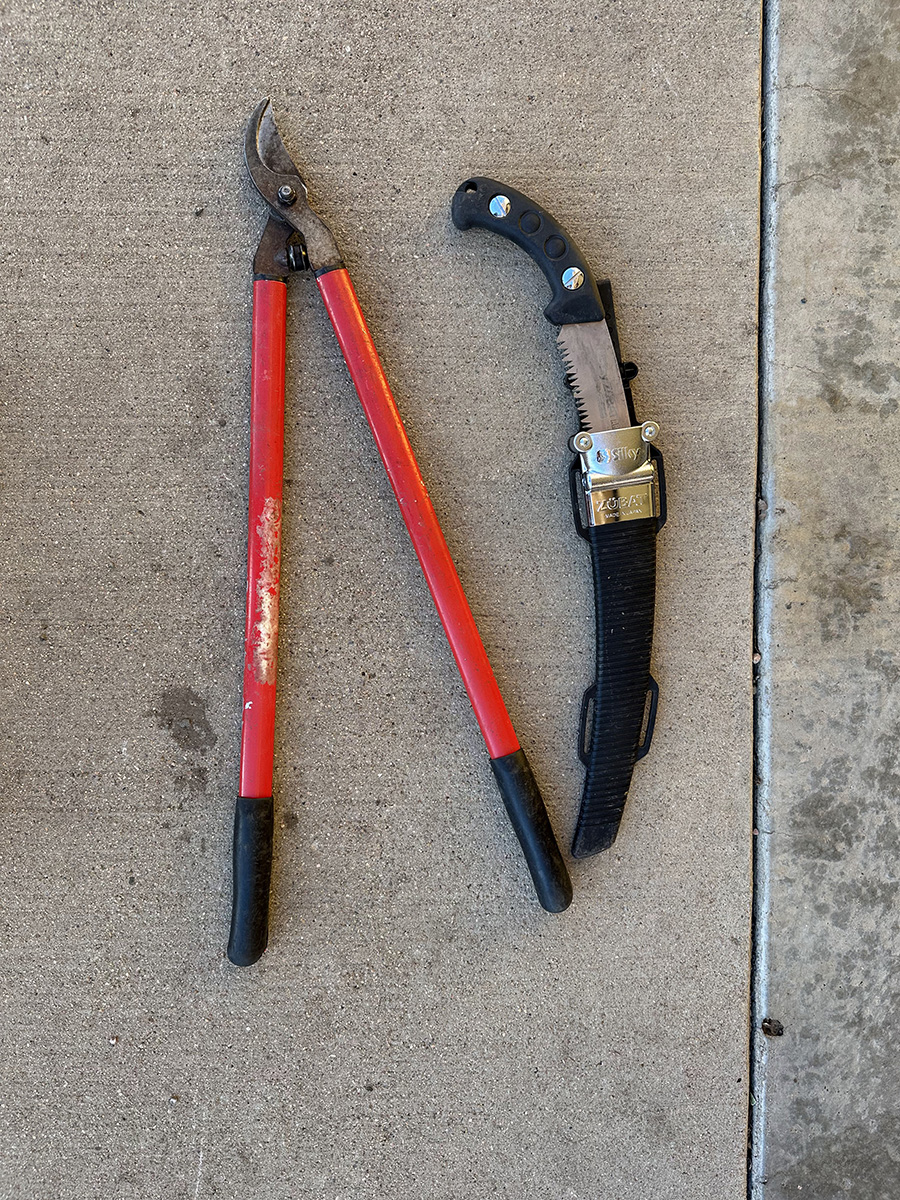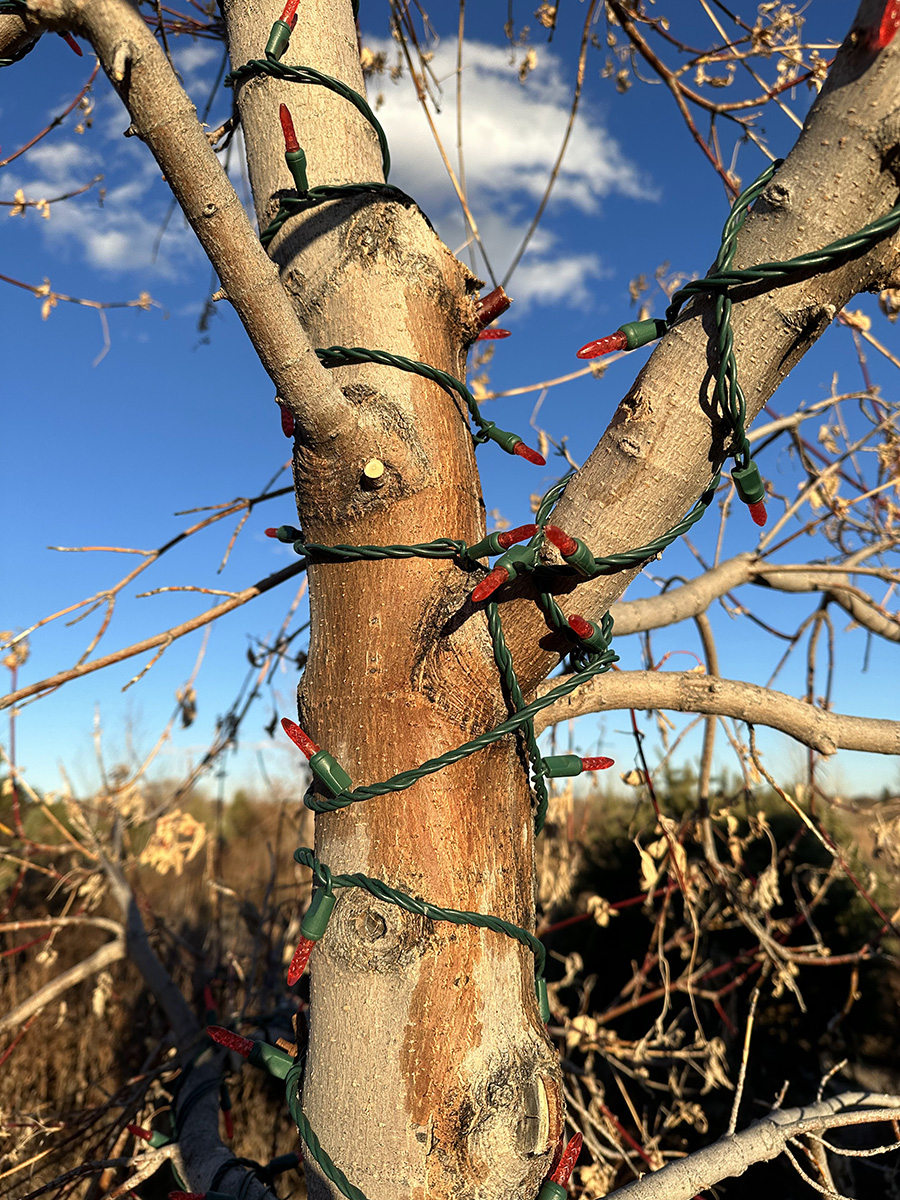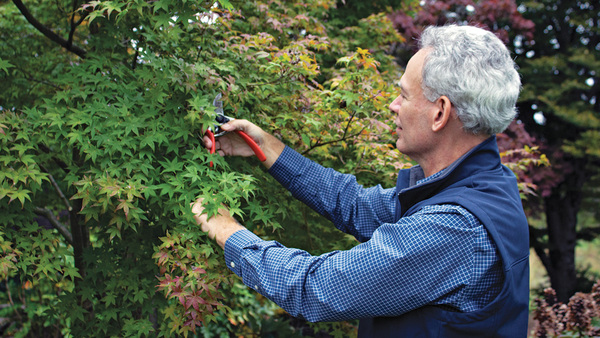
Winter is, broadly speaking, the ideal time to prune most trees and shrubs.
Deeply dormant, these woody plants experience less stress when pruned in the winter months, and with cool temperatures, fewer pathogens are active and able to make their way into pruning cuts.
A few woody plants, however, are best left through winter and pruned in another season. When you are performing your annual structural pruning, pass by these woodies for their own good.
Woody plants to avoid pruning in winter
Maples and box elder (Acer spp. and cvs.)
One of relatively few groups of regionally relevant landscape trees that winter-prune poorly, maples of all kinds push sap vigorously during the winter and early spring months. This is with good reason: they are among the first trees to flower in spring and provide excellent early-season forage for insects. If pruned in winter, they will “bleed” sap profusely, leading to unsightly bark streaking. This flow of sugar-rich sap can also encourage the growth of undesirable organisms on the tree. This sap, of course, is why maples are tapped during the late winter, since it is the raw material for making maple syrup. Instead of winter pruning these trees, postpone structural work until the leaves are fully expanded. Trees will require deep, occasional watering after a summer pruning.
Birch (Betula spp. and cvs.)
Just like maples, birch of many kinds push sap from root to shoot during the winter and spring seasons to fuel their early spring bloom. I learned this lesson the hard way after thinking I was doing the right thing by winter pruning a large river birch (Betula occidentalis) in one of my gardens, only to find that it oozed sap for over a month; unsightly mold growth followed on the trunk where the sap flowed over the tree’s bark. I now summer prune my birch and have had good results, but I always water deeply before and after summer pruning to help mitigate tree stress.
Roses (Rosa spp. and cvs.)
Though gardeners in some milder regions can prune roses quite early, I defer all rose pruning until bud break in spring. Our erratic temperature swings and extreme temperatures—plus dryness—often result in a higher rate of cane damage or death than is typically seen in other regions. Additionally, I have found that pruning too early opens the plant’s vasculature, which can be damaged further in a succeeding cold snap. These days, I let the plants start to break dormancy in spring, ensure we are out of the risk of hard frost, and then prune. I first assess and remove dead and severely damaged canes before moving on to prune what remains for health and structure, taking rose type into account. In practice, this means I often don’t prune my roses until May.
In winter, don’t hard prune shrubs that flower on old wood
From a pruning standpoint, shrubs can be divided broadly into two groups for our region:
- those that flower on fresh growth (new wood), and
- those that flower on growth from last year or earlier (old wood).
That distinction is worth knowing when you are winter pruning in your garden. If you winter prune shrubs that flower on old wood, you will also remove spring flower buds on that plant. This includes a number of regionally popular plants, like lilac (Syringa), forsythia (Forsythia), and shrubby potentilla (Dasiphora fruticosa, formerly Potentilla fruticosa).
I handle this dilemma by performing a thinning pruning, removing a portion of the shrub’s wood each winter. Each winter I remove the oldest branches on the plant, any rubbing branches, and any dead wood, and never more than one-third of the shrub’s total branches. These are best cut right to the base with a sharp saw or pair of loppers. This style of pruning, called thinning (rather than heading) encourages vigorous, juvenile growth each year while leaving two-thirds or more of the plant’s wood mature enough to flower. If you are unwilling to sacrifice flower buds, perform a similar thinning pruning just after bloom on these genera; that is more traditional and works just fine.

Winter and early spring remain the best seasons to carry out major pruning tasks. Plants and pathogens are dormant, and pruning for a healthy plant structure is far easier without leaves obscuring your view. Still, it is wise to defer pruning of maples, birch, and rose, and to adjust pruning technique on shrubs that flower on old wood to optimize plant health and aesthetic appeal for the coming growing season.
Learn more about pruning:
And for more Mountain West regional reports, click here.
Bryan Fischer lives and gardens at the intersection of the Great Plains and the Rockies. He is a horticulturist and the curator of plant collections for a local botanic garden.
Photos: Bryan Fischer




















Comments
Log in or create an account to post a comment.
Sign up Log in